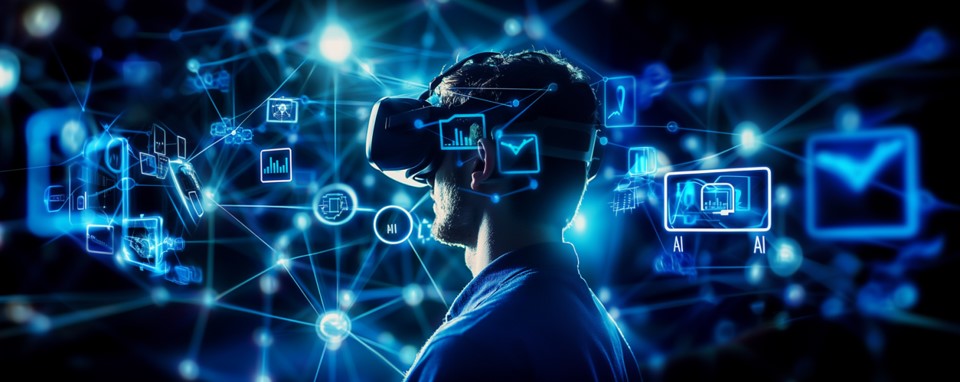
The metaverse👉 A persistent, immersive virtual world connecting digital and physical realities. presents unique challenges for intellectual property👉 Creations of the mind protected by legal rights. (IP) rights due to its decentralized, interoperable, and immersive nature. Unlike traditional digital platforms, the metaverse aims to seamlessly blend physical and virtual worlds, enabling users to move freely between different environments and experiences.
IP Governance in an Interoperable Environment
One of the core principles of the metaverse is interoperability👉 The ability to exchange and use information seamlessly across boundaries., which allows users to move avatars, digital assets, and data across different virtual worlds and platforms. This raises questions about how IP rights will be governed and enforced in such a fluid and interconnected environment. Existing IP laws and regulations are typically tied to specific jurisdictions or platforms, making it challenging to establish consistent rules and standards across the metaverse.
Issues with Existing Technologies
The metaverse relies on various emerging technologies, such as blockchain, non-fungible tokens (NFTs), and artificial intelligence (AI), which present their own IP challenges. For instance, the decentralized nature of blockchain and NFTs can make it difficult to establish clear ownership and control over digital assets. Additionally, AI-generated content raises questions about authorship and copyright👉 A legal protection for original works, granting creators exclusive rights. ownership.
Blurring the Lines: Trademarks and Copyrights in a Virtual World
Trademarks, which safeguard distinctive signs like logos and brand👉 A distinctive identity that differentiates a product, service, or entity. names, become particularly complex in the metaverse. Imagine a virtual Gucci store within a metaverse platform. Does Gucci have exclusive rights to its logo and branding within this virtual space?
The answer is not entirely clear. Current trademark👉 A distinctive sign identifying goods or services from a specific source. laws typically apply to physical goods and services. While some argue existing laws can be adapted to the virtual sphere, others highlight the limitations. The global nature of the metaverse raises further questions. Can a trademark registered in one country be infringed upon in a virtual world with no geographical boundaries?
Copyright, which protects original works like creative expression, also faces challenges. Virtual spaces offer new avenues for artistic expression. A user might create a virtual sculpture heavily inspired by a copyrighted work. Does this constitute infringement?
Furthermore, user-generated content (UGC) is a cornerstone of many metaverse experiences. How can platforms strike a balance between encouraging creativity and protecting the rights of copyright holders? Can users be held liable for unknowingly incorporating copyrighted material into their virtual creations?
Conflicts with Technological Infrastructure
The metaverse’s technological infrastructure, which enables the creation and transfer of digital assets across platforms, may conflict with traditional IP protection mechanisms. For example, the ability to easily copy, modify, or distribute digital content in the metaverse could potentially undermine copyright protections. Similarly, the use of virtual and augmented reality technologies could blur the lines between physical and digital IP rights.
Patents and the Metaverse: Protecting Virtual Inventions
Patents safeguard inventions, including processes, machines, and manufactured articles. The metaverse could lead to novel virtual inventions requiring patent👉 A legal right granting exclusive control over an invention for a limited time. protection.
However, proving the novelty👉 Requirement that an invention must be new and not previously disclosed. and non-obviousness of a virtual invention👉 A novel method, process or product that is original and useful. might be difficult. Existing patents may not always provide clear distinctions when applied to the virtual realm. Additionally, rapid development within the metaverse could render patents obsolete quickly.
Applicability of Existing IP Definitions and Legal Assumptions
Many existing IP laws and legal frameworks were developed before the advent of the metaverse and may not adequately address the unique challenges posed by this new digital realm. Concepts such as “use,” “distribution,” and “infringement” may need to be re-evaluated in the context of the metaverse, where boundaries between physical and virtual worlds are blurred, and digital assets can be easily replicated and shared across platforms. Addressing these challenges will require collaboration between policymakers, technology companies, IP rights holders, and other stakeholders to develop new frameworks and guidelines that balance innovation👉 Practical application of new ideas to create value., creativity, and IP protection in the metaverse.
Jurisdiction and Enforcement: Who Makes the Rules?
The metaverse is likely to be decentralized, existing across different platforms and jurisdictions. This raises concerns about where disputes regarding IP infringement👉 Unauthorized use or exploitation of IP rights. will be settled and which legal framework will apply.
Furthermore, enforcing IP rights in the metaverse might be challenging. Identifying infringing content and users could be complex, especially in decentralized platforms. Traditional takedown notices, often used to remove copyrighted material from websites, might not be as effective in the dynamic and user-driven metaverse.